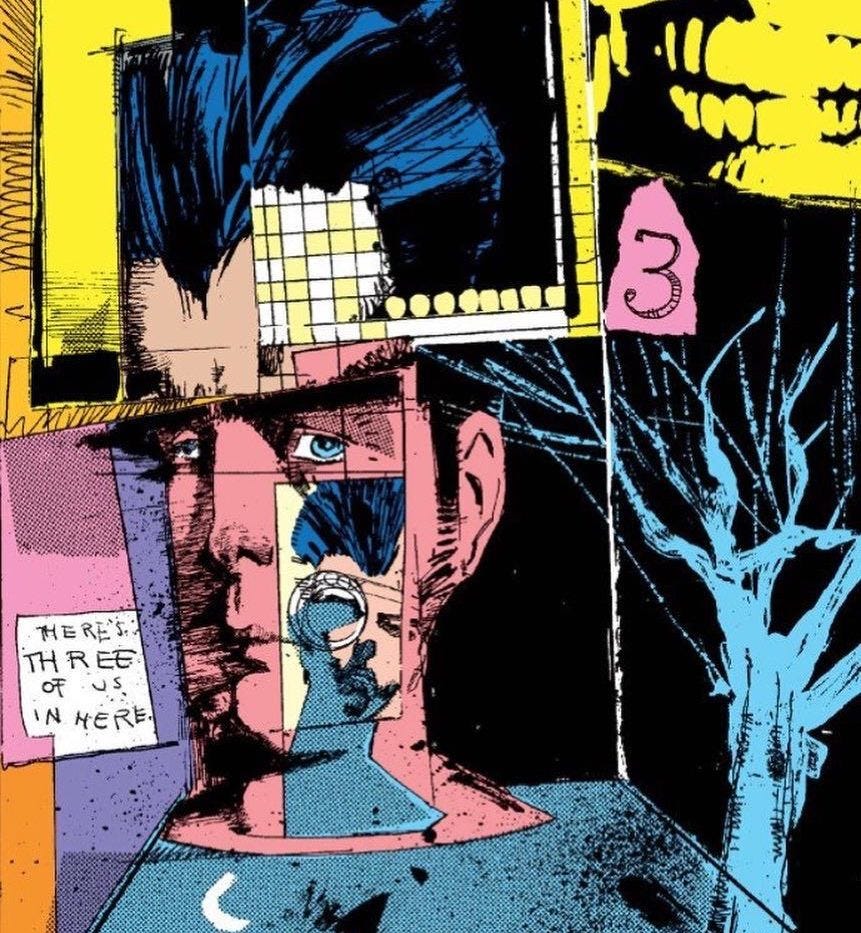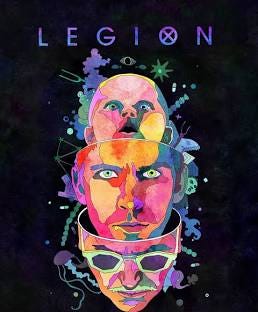I picked up a virus in Asheville during Mythic Con, and I am still feeling its effects. So this week’s newsletter is short and not intentionally timely. Words and ideas spill out of my head all the time (not a mucus metaphor at all), and I keep a few Substack posts-in-process around to catch them.
Possibly my favorite character on Arrow (after Felicity Smoak, of course) is Christopher Chance, a.k.a. the Human Target, played by Australian Wil Traval, who I first saw as a super-soldier wannabe on Jessica Jones. I have always dug the man of a thousand faces trope
Most actors have a familiar energy that they bring to the screen, from the bubbly good-heartedness of Jennifer Aniston to the simmering intensity of Al Pacino. A few, however, bring a different energy to every character they play. They are chameleons, slipping fully into a variety of wildly dissimilar roles in which they are largely unrecognizable. They are masters of accents, alter their mannerisms for each character, and change their appearance so drastically that they seem almost like shape shifters.
and greatly respect people who can do that (two of my favorites, unlisted in that article, are Vincent D’Onofrio and Charlize Theron). Shape-shifting is i.m.h.o. the best super-power, in part because you get other super-powers for free (strength, speed, senses, potentially flight if you can do wings, etc.), but also because of the opportunity to alter your perspective, to change how you see other people and how they see you.
I did not remember that there were two previous attempts at giving the Human Target his own TV series, in 1992 and in 2010. The Arrow version is pretty shallow. Traval steps into the scene after another actor pulls his face off, and his Christopher Chance is a charmingly bland fellow who works all the time.
My Name is Legion
There was a series of short stories by Roger Zelazny that I liked where he used the name Legion for a character who could (electronically at least) become anyone. I don’t know if Chris Claremont read any of those stories or took the name directly from the Bible (Mark 5:9), but his Legion was much more over the top.
Charles Xavier’s son David Haller is not only a more powerful telepath than his father, he has other gifts that in some ways rival those of Franklin Richards. He’s an Omega-level mutant, with access to layers of reality that human brains have not yet evolved to deal with. In the comics, he grows up in Israel and Paris, where his powers activate during a Jihadist attack and kill the terrorists. One of them survives being killed and takes up residence in David’s head, as one of his multiple personalities.
Noah Hawley’s mostly live-action take on the character might be my favorite super-hero show ever. It is stunningly beautiful, visually, and it has just the right mix of darkness, pretentious sophomore philosophy, and silly humor — including some musical numbers.
There’s Six of Us In Here
The documentary Red Heaven chronicles one of NASA’s HI-SEAS experiments, where they locked a half-dozen technical professionals up in a 1200-square-foot habitat on a remote Hawwaiian lava field for a year to see how they would react.
The “we are science” quote I used for today’s title comes from Sheyna Gifford, one of the participants, who I met at the first SSOCIA conference at Clemson. Her husband is Ben Kinney, a neuroscientist and SF author. He is better-known than I am, in part because he was an editor on Escape Pod (they just published one of his stories, called Elegy of Carbon, as their 960th episode). I met him at SSOCIA too. Nice guy.
There used to be a Citizen Science Assocation, but they changed their name to the Association for Advancing Participatory Sciences because “citizens” was too restrictive. OK, so I’m a writer, and yes, word choice is important, but I also realize there are no perfect descriptions, and the endless optimization of marketing terms is something I personally find really tiring.
That said, I agree with their mission, and I also think that the only way forward, educationally, is to stop only doing simulations of science in the classroom and to let students get their hands dirty on real-life problems. I just ordered a 2015 book by Kathleen M. Sussman at Vassar, who’s been doing service learning with mid-level physiology students.
We do have local examples to emulate. My not-quite-colleague Vas Taras over in the Bryan School of Business at UNCG runs a program called X-Culture, a crowdsourcing approach where groups of undergrads take on business clients and help them with problems in international marketing.
As a little boost to all of that good work, I include a link to The Sample, an automated newsletter referral service.
Thanks for reading!





Thanks for sharing, Dr. Eclectic, Science is under attack. Stay strong 💪 stay focused - my thoughts are with you, we shall overcome. ~ciao
which reminds me of this, from December sometime
https://randallhayes.substack.com/p/violence-is-not-an-option